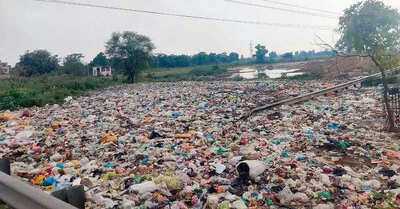 The Urban Migration Crisis
The Urban Migration Crisis
India is experiencing a significant shift as individuals leave rural areas and smaller towns for larger cities, seeking improved opportunities. This migration is placing immense strain on the civic infrastructure of major metropolitan areas like Delhi and Mumbai.
A report from the World Bank indicates that by 2036, urban centers in India will accommodate approximately 600 million residents, which will represent 40% of the total population, a rise from 31% in 2011. Urban regions are expected to contribute nearly 70% to the nation's GDP, presenting various challenges, particularly in managing municipal solid waste.
In Delhi, the responsibility for municipal solid waste (MSW) management lies with the Municipal Corporation of Delhi (MCD), the New Delhi Municipal Council (NDMC), and the Delhi Cantonment Board (DCB). Most areas fall under the MCD, while the NDMC and DCB manage their regions more effectively.
The NDMC area generates about 280 tonnes of waste daily, with processing capabilities exceeding this amount and no legacy waste sites. In contrast, the DCB produces an estimated 62 tonnes of MSW daily, all of which is sent to the waste-to-energy facility in Okhla.
The MCD, however, struggles significantly. It generates around 11,000 tonnes of MSW daily but can only process approximately 8,073 tonnes, resulting in about 3,800 tonnes of waste being sent to the Ghazipur and Bhalswa dumpsites.
The MCD has proposed new waste processing facilities at locations such as Narela, Ghazipur, Okhla, Tehkand, and Gogha Dairy, which are expected to boost its processing capacity to 5,473 tonnes by 2027, as reported by the Union Ministry of Housing and Urban Affairs to the Supreme Court.
Legacy waste remains a significant concern, with a total of 280 lakh metric tonnes stored at three dumpsites: Ghazipur (40 LMT), Bhalswa (80 LMT), and Okhla (60 LMT). To date, 131.54 LMT has been remediated, with timelines set for complete remediation by December 2025 for Bhalswa, December 2027 for Ghazipur, and June 2025 for Okhla.
The ongoing waste crisis in Delhi highlights the shortcomings of the Executive branch (Centre, NCT Government, and MCD) in enforcing the Solid Waste Management Rules of 2016. This situation has prompted the Supreme Court to intervene, expressing concern over the implementation failures in Delhi and potentially across other cities in India.
On February 24, the Supreme Court instructed states in the National Capital Region (NCR) to devise a detailed waste management strategy with specific timelines and responsible agencies. The court stressed the critical need for waste segregation at the source to protect the environment, questioning how cities can evolve into smart cities without adhering to the Solid Waste Management Rules.
Emphasizing the necessity of complete collection and segregation of solid waste, the Supreme Court directed the governments of Delhi, Haryana, Rajasthan, and Uttar Pradesh on May 4 to appoint senior officials to oversee the achievement of these goals.
The Executive often voices concerns about judicial overreach, yet the current waste management crisis exemplifies a failure that has led to welcomed judicial intervention. It is crucial for the Executive to take decisive action.